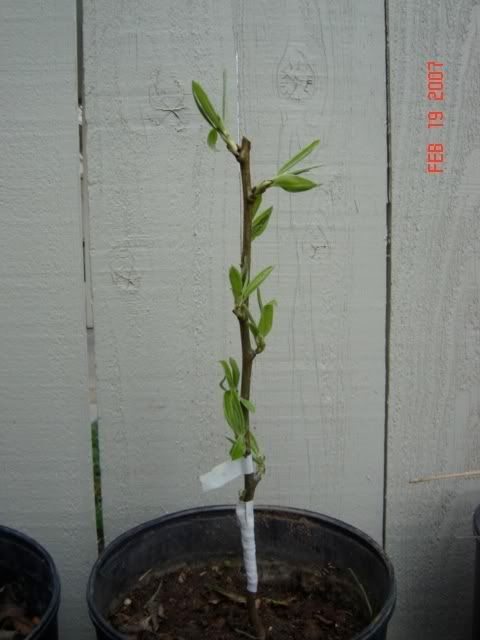








 1
1




 3
3




Michael Qulek wrote:Apples I think are a complete waste of you time. My personal experience is that apple cuttings will stay alive untill bud-break. Rootless cuttings can stay alive till they start to make real leaves. Once leaves sprout it kills the cutting through dehydration.
 1
1




John Elliott wrote:
Do you actually have an apple cutting that you have successfully rooted more than an year old? Lots of people report "successes" of work in progress, but never have a rooted seedling to show for it.Michael Qulek wrote:
I'm still working on this method, so anyone else who wants to join in on the experiment, come on and share your experiences.
Grafting however is so easy I wouldn't even waste time perfecting propagating cuttings. I've sprouted the seeds of store-bought apple and pear fruit with excellent results. Here's an example of an Anjou pear scion that I grafted onto an Anjou pear seedling. Have had similar results with apple, peaches, apricots, and Japanese plums.

Here's on observation I made that might require further examination. When grafting one apple scion, I noticed advantageous roots coming off the bottom of the graft union. I've heard of a technique a little like air-layering, where you cut almost completely through a branchlet, but leaving a little hinge of bark on on side. You then add rooting hormone to the cut surface which is held apart with a segment of toothpick. The cut area is plastic wrapped to keep the area moist till roots develop. The strip of bark keeps the cutting hydrated long enough for roots to develop. I've read there are successes with plums using this technique. That might work far better than trying to root a totally severed cutting. All my apple and pear cutting failed 100% without fail, even when sitting in willow water.
 1
1




Michael Qulek wrote:Do you actually have an apple cutting that you have successfully rooted more than an year old? Lots of people report "successes" of work in progress, but never have a rooted seedling to show for it.
 2
2




 1
1




Ya know, I very sincerely doubt that's what they were doing. I suspect that either these "sticks" were actually scions grafted onto rooted rootstock, or what they were planting wasn't apple.Johnny Niamert wrote:Last spring, I saw a few workers sticking dormant apple sticks in the dirt. Most of the sticks leafed out and appeared 'normal' all summer, growing until fall and losing their leaves normally at the appropriate time..... Grafting is on my 'to try' list.




 1
1




I'm also pressed for space. I've done 100% of my grafting onto potted rootstocks, mostly seedlings of seeds from store-bought fruit. It really facilitates the grafting process to be able to set your rootstock up in front of you, so the graft junction is in your face rather than down on the ground.Johnny Niamert wrote:[b]My present situation doesn't allow me to get too much in the way of rootstock started.
Would it be better to direct seed the rootstock in the field, or start them in containers?[/b]








Check out Redhawk's soil series: https://permies.com/wiki/redhawk-soil





|
The meaning of life is to give life meaning. - Ken Hudgins / tiny ad
The new gardening playing cards kickstarter is now live!
https://www.kickstarter.com/projects/paulwheaton/garden-cards
|




